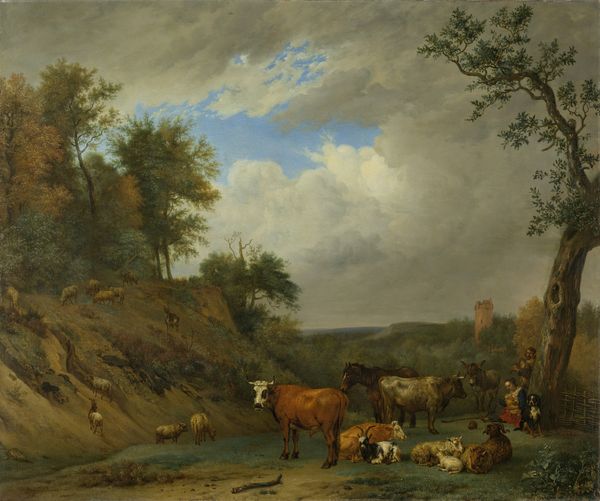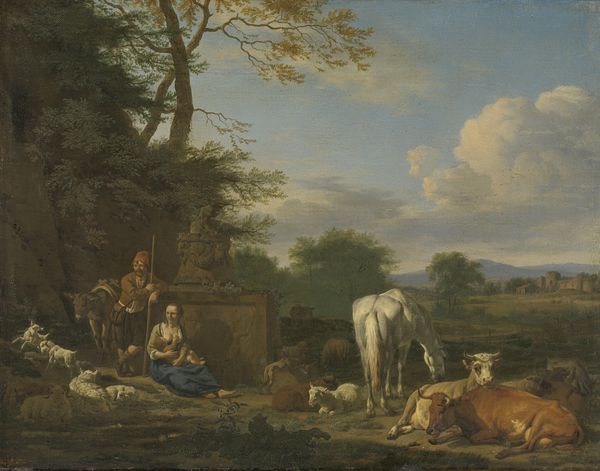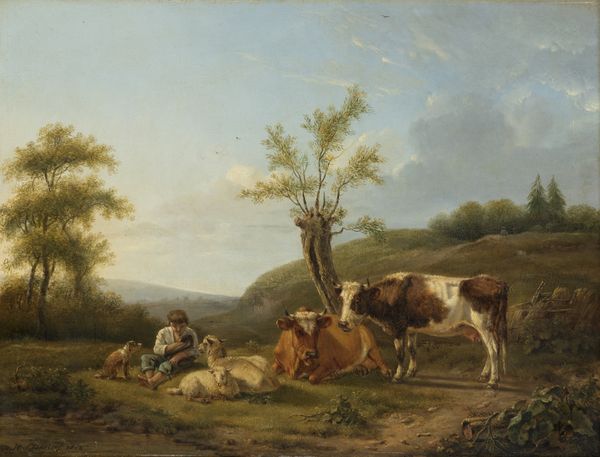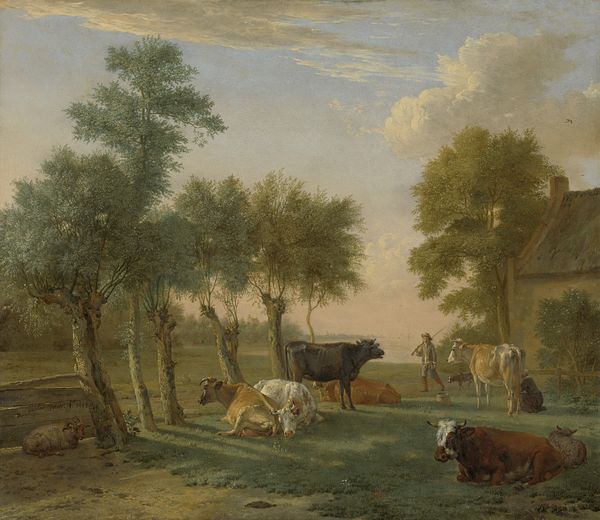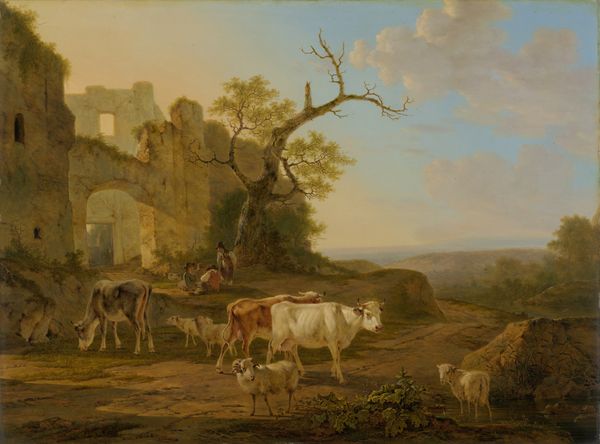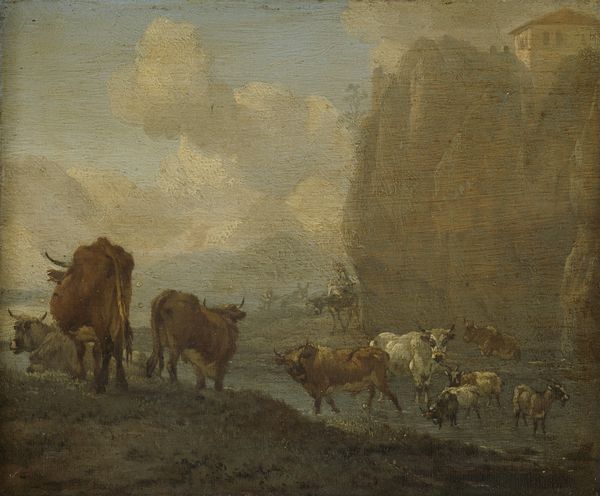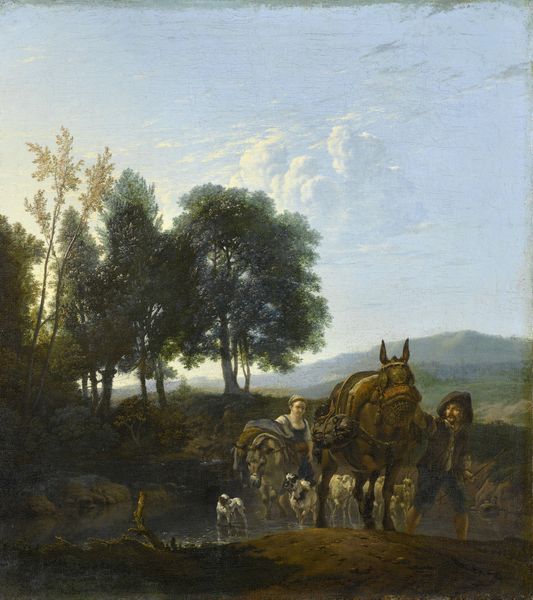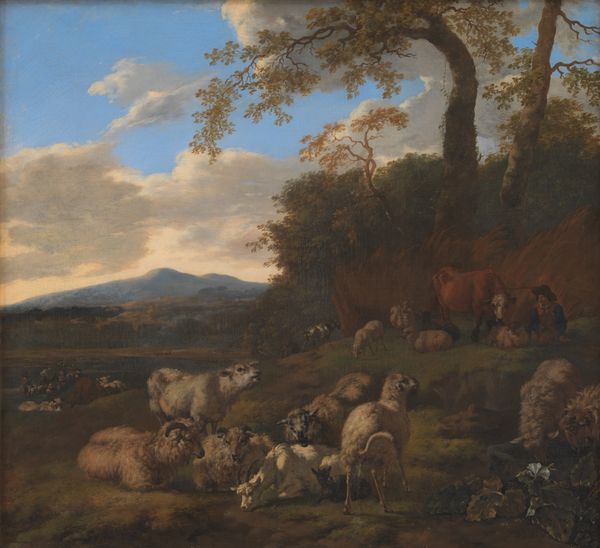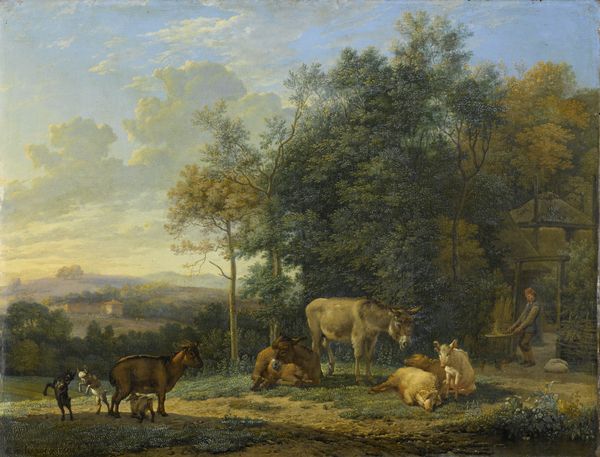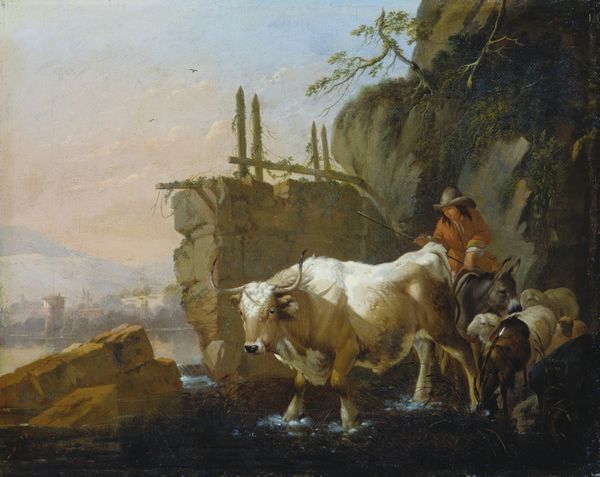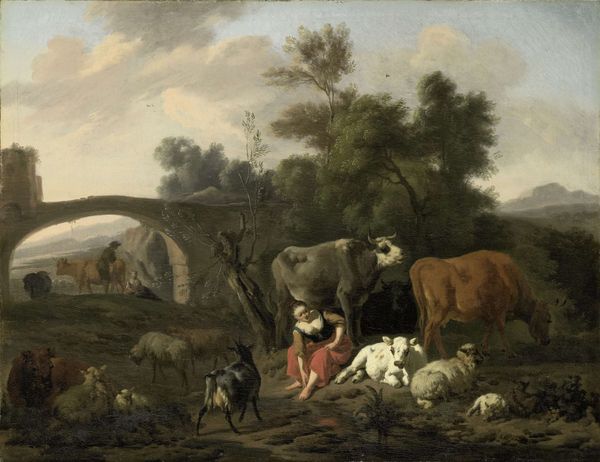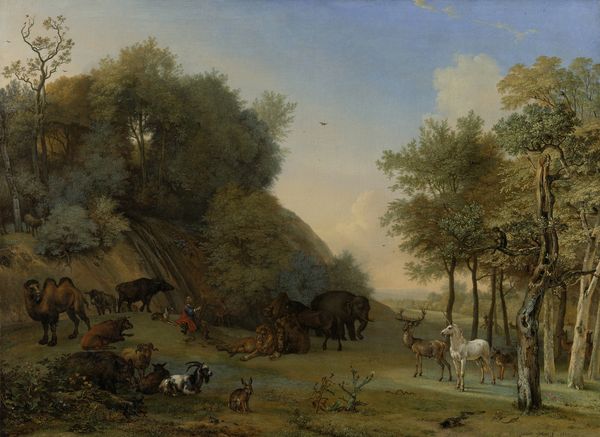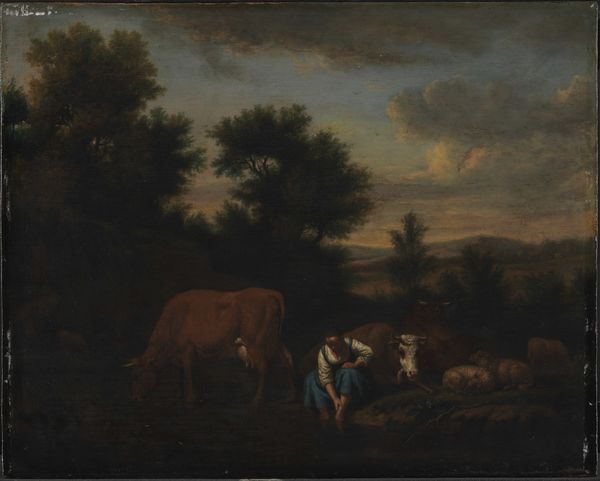
painting, oil-paint
#
narrative-art
#
baroque
#
dutch-golden-age
#
painting
#
oil-paint
#
landscape
#
figuration
#
oil painting
#
genre-painting
#
history-painting
#
realism
Dimensions: 67 × 78.4 cm (26 3/8 × 30 7/8 in.)
Copyright: Public Domain
Editor: This is Adriaen van de Velde's "Pastoral Landscape with Ruins" from 1664. The composition is really striking – ruins, livestock, people... It feels very staged, but serene. How do you interpret the scene's significance, especially with those crumbling ruins in the background? Curator: It’s tempting to romanticize the ruins as mere picturesque elements, but a historical perspective suggests something more. These aren't just any ruins; they speak to the ever-present awareness of a grand, often idealized past, usually referring to antiquity, within Dutch Golden Age painting. Editor: So, they aren’t simply decorative? Curator: Not entirely. The Dutch Golden Age was a period of tremendous prosperity and burgeoning national identity. Placing genre scenes within the framework of these imposing, yet decaying structures allows viewers to contemplate ideas about the temporality of empires. How do you think the people and animals populating the painting contribute to this reading? Editor: I see... The figures and animals almost reclaim the space, suggesting a natural, cyclical return. Like, the ordinary endures when empires collapse. Curator: Precisely! Van de Velde might be subtly commenting on the shifting power dynamics of Europe at the time. The emphasis on everyday life within a crumbling empire possibly represents the resilient spirit. Consider who typically consumed these paintings: a rising merchant class, keen to establish their legacy within the cultural narrative. Editor: So, it's less about the beautiful landscape and more about what that landscape *represents* to its original audience. Fascinating. Curator: Exactly. It provides insight into their aspirations and their understanding of history's trajectory. Editor: It makes you think about how art reinforces the existing status quo even while it seemingly critiques it. Thanks, that's changed how I see it completely. Curator: Indeed. It’s about digging beneath the surface to understand the politics of imagery and how the reception and appreciation of the painting would affect a particular socio-political era.
Comments
No comments
Be the first to comment and join the conversation on the ultimate creative platform.
